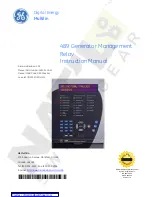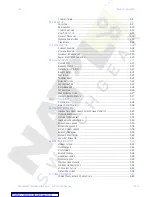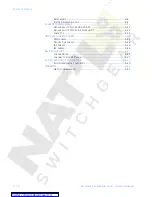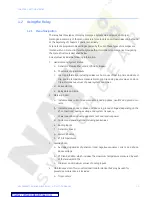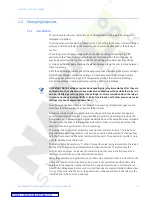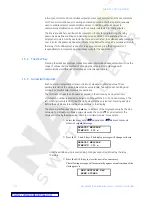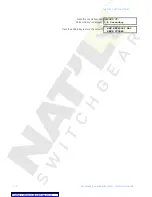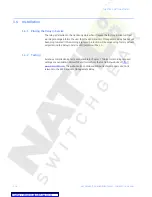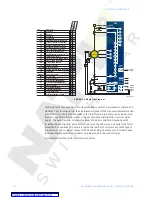
CHAPTER 1: GETTING STARTED
489 GENERATOR MANAGEMENT RELAY – INSTRUCTION MANUAL
1–3
1.2
Using the Relay
1.2.1
Menu Navigation
The relay has three types of display messages: actual value, setpoint, and target
messages. A summary of the menu structure for setpoints and actual values can be found
at the beginning of chapters 5 and 6, respectively.
Setpoints
are programmable settings entered by the user. These types of messages are
located within a menu structure that groups the information into categories. Navigating
the menu structure is described below.
Actual values
include the following information:
1.
Generator and System Status:
a. Generator status either online, offline, or tripped.
b. The status of digital inputs.
c.
Last trip information, including values such as cause of last trip, time and date of
trip, pre-trip temperature measurements, pre-trip analog inputs values, and pre-
trip instantaneous values of power system quantities.
d. Active alarms.
e.
Relay date and time.
2.
Metering Data:
a. Instantaneous current measurements including phase, neutral, and ground cur-
rents.
b. Instantaneous phase to phase and phase to ground voltages (depending on the
VT connections), average voltage, and system frequency.
c.
Power quantities including apparent, real and reactive power.
d. Current and power demand including peak values.
e.
Analog inputs.
f.
Generator speed.
g. System phasors.
h. RTD temperatures.
3.
Learned Data:
a. Average magnitudes of generator load, negative-sequence current, and phase-
phase voltage.
b. RTD learned data, which includes the maximum temperature measured by each
of the twelve (12) RTDs.
c.
Minimum and maximum values of analog inputs.
4.
Maintenance data. This is useful statistical information that may be used for
preventive maintenance. It includes:
a. Trip counters

